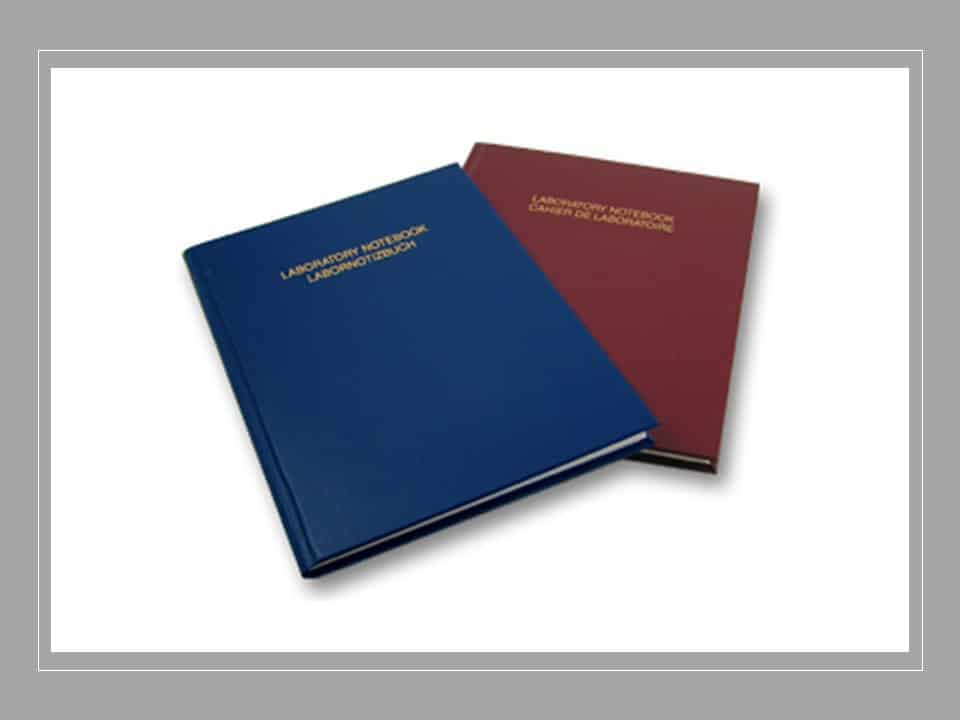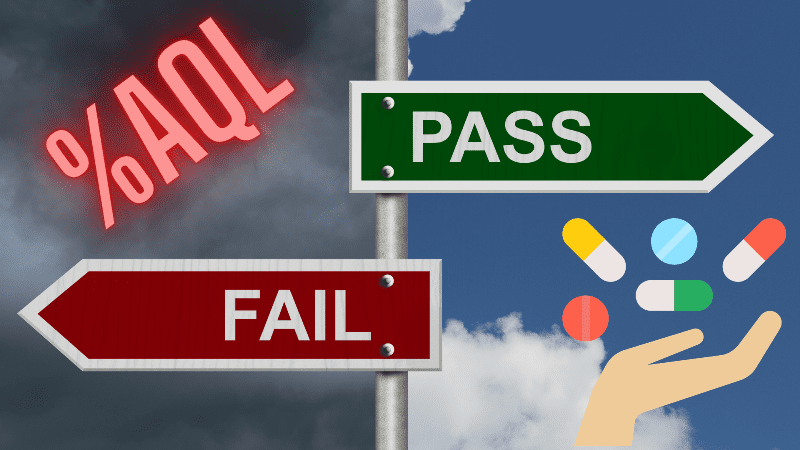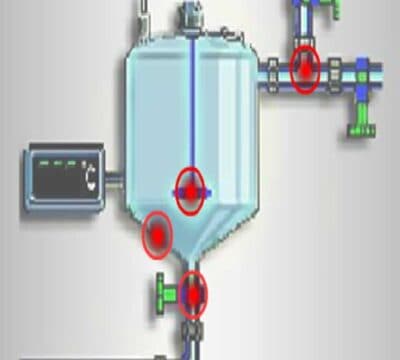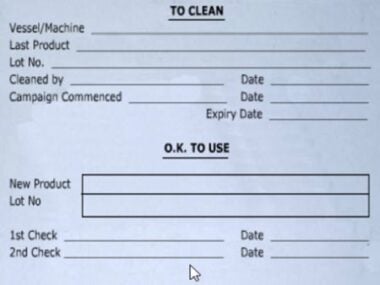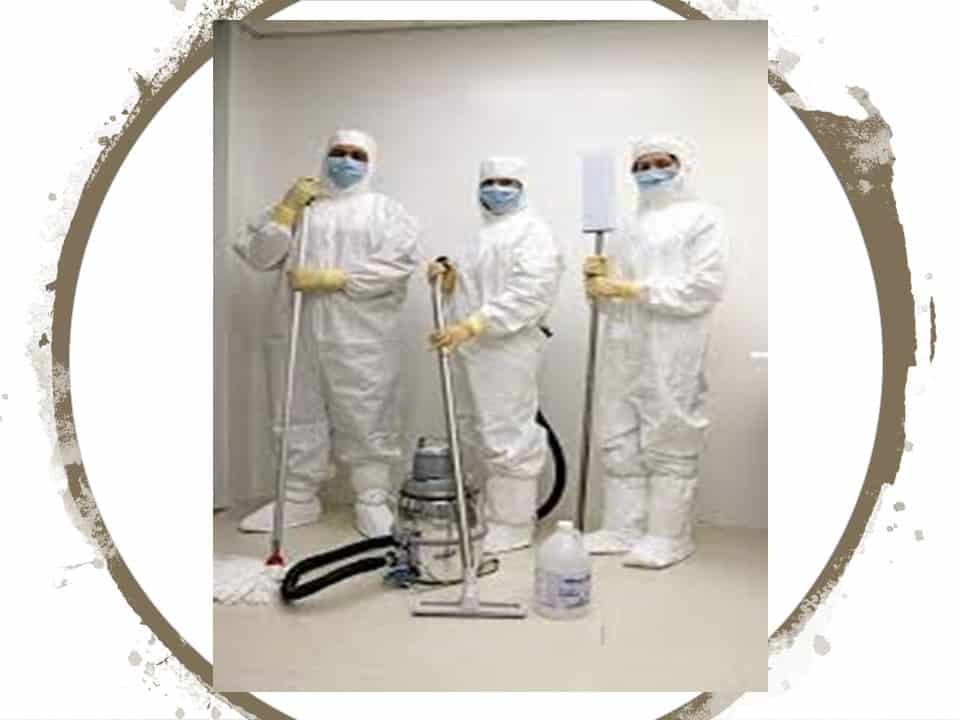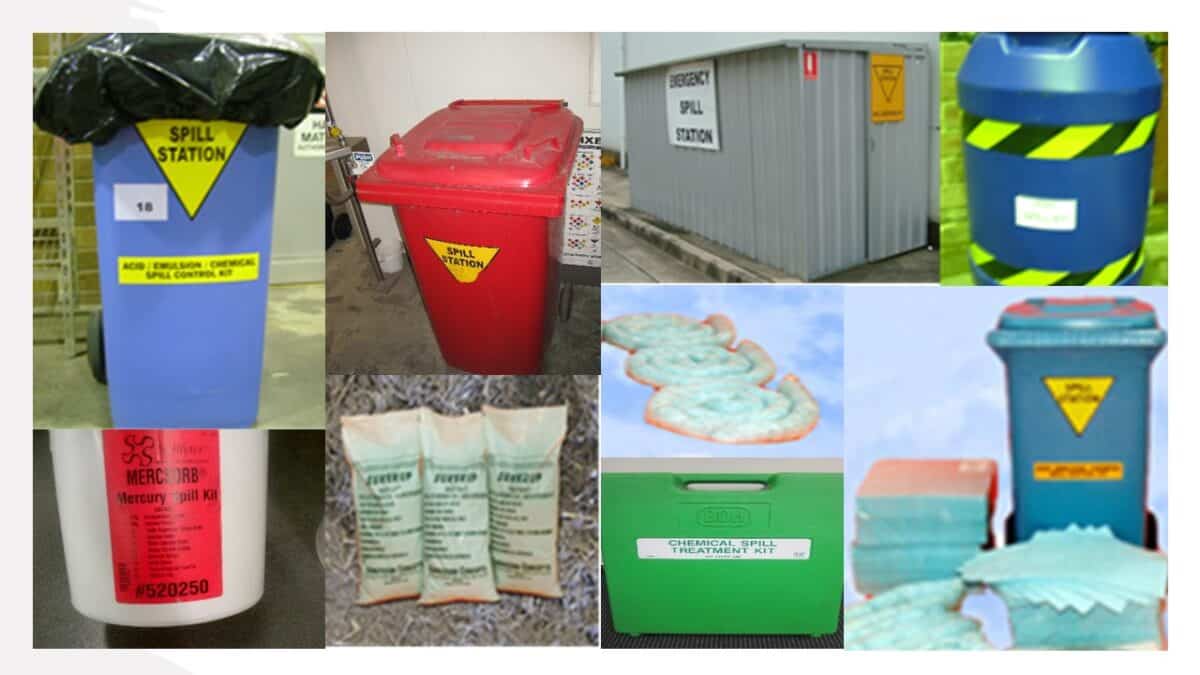
Chemical or Biological Spill Response Procedure
- Published on: Sep 21, 2021
The purpose of this article is to provide an overview of the spill prevention measures and spill response tasks associated with unintended releases of a chemical or biological materials at GMP production facility.
This procedure considers spill prevention, response and management of a spill, objectives for managing a spill, disposal of contaminated materials, reporting spills and responsibilities of spill response team.
Definition
Hazardous – refers to the characteristics of a material (solid, liquid or gas) to cause harm or discomfort to a person. This may relate to its toxic or poisonous nature, its ability to cause chemical burns, irritate the skin or cause respiratory distress. The characteristics of a material can be obtained from the MSDS.
Incidental spill – Normally are very small in nature, do not represent significant hazard to anyone dealing with the spill, and are easily cleaned up by one person using readily available materials.
Minor Spill – A subjective term used to describe a small chemical release that is non-hazardous.
Major spill – A subjective term used to describe a serious chemical release. Major spills will have one or more of the following characteristics:
a. The spill threatens the health and safety of those in the area of the spill;
b. The spill has the potential to cause serious damage to the facility or equipment;
c. Special materials are required for clean-up of the spill including the use of a respirator or other personal equipment, or the use of special spill control chemicals;
d. The quantity released requires a significant amount of labour for control and clean-up.
e. The released material may have a risk to the environment
f. The spill involves a hazardous material
210 SOPs, 197 GMP Manuals, 64 Templates, 30 Training modules, 167 Forms. Additional documents included each month. All written and updated by GMP experts. Checkout sample previews. Access to exclusive content for an affordable fee.
Notifiable Pollution Incident
A notifiable pollution incident is deemed notifiable if there is a risk of “material harm to the environment”, which is defined as; Involving actual or potential harm to the health and safety of human beings or to ecosystems that is not trivial, or
It results in actual or potential loss or property damage of an amount, or amounts in aggregate, exceeding $10,000.00 (or such other amount as is prescribed by the regulations) and
Loss includes the reasonable costs and expenses that would be incurred in taking all reasonable and practicable measures to prevent, mitigate or make good harm to the environment.
Responsibilities
Department Managers are responsible for
a. Ensuring that Spill Kits located in their area are checked every month using the appropriate Spill Kit Checklist. Any items missing or in poor or unsuitable condition are to be reordered via the EHS Specialist. (This is a shared responsibility with the Spill Team Member)
b. File completed checklists in the area for a period of 6 months.
c. Communicating the location of the spill kit to all staff in the area.
The Spill Response Team Member is responsible for
a. Responding immediately to any notified spill as required.
b. To participate in Spill Management Committee meetings.
c. To participate in developing and maintaining procedures for spill management.
d. Recommending, contributing to and overseeing the cleanup process.
e. Participating in routine stock-take of items stored in the Spill Response Shed. This will be a shared responsibility for the Spill Team Members.
f. Participating in the investigation of spills.
g. Evaluating the nature of the spill and the consequences of the spill.
h. Ensuring that Spill Kits located in their area are checked every month using the appropriate Spill Kit Checklist
Participating in training as required.
The Spill Team Leader is responsible for;
a. Leading the Spill Team and coordinating duties as required.
b. Liaising with emergency services where applicable.
c. Assisting the EHS Specialist in developing a report of each major incident.
The EHS Specialist is responsible for;
a. Coordinating the activities of the Spill Response Team as necessary when a spill occurs.
b. Convening Spill Response Team meetings
c. Organising appropriate training for the Spill Response Team.
d. Reporting, as necessary, any spills to the relevant regulatory authority.
e. Organising appropriate disposal of waste from spills.
f. Assistance in the preparation of a report after each incident
Employees are responsible for;
a. Ensuring that when transporting and/or working with any chemicals the containers must be properly closed and secured at all times. Risks in storage and/or transporting materials from one point to another must be assessed before
b. Ensuring that when transporting bulk vessels, portable tanks, drums, etc proper and compatible material handling equipment is to be selected for safe transport of hazardous, flammable and biological materials.
c. Ensuring that a safe speed is maintained when operating material handling equipment (eg: forklifts, trolleys, etc) for safe transfer of materials. Avoid unnecessary speed, sudden braking, and unnecessary vibration, which could cause vessel breakage or material spills.
d. Avoiding storage of chemical materials (raw material, hazardous wastes, hazardous chemicals, etc) adjacent to storm water drain inlets, passageways and/or exit fire doors and store away from any sources of energy (electrical, heat, etc).
e. Storing hazardous chemicals and hazardous wastes in bunded areas at all times.
f. Making sure that hazardous and biological materials are properly labeled at all times.
g. Not receiving any hazardous materials onto the site or at any subsequent point of transfer without proper labeling.
h. Knowing who to contact if a spill occurs and basic knowledge of spill kit equipment.
Response and management of a spill
Safety first
Under no circumstances will employees risk their own safety attempting to clean up a spill.
Initial evaluation
The employee on the scene at the time of the spill must make an initial evaluation to determine if it is a minor or major spill and the consequences of the spill. Consider if it will contaminate any trade waste system, storm water, creek or other sensitive areas. If there is any doubt about the severity of the spill, treat it as worst case scenario.
Report the Incident Immediately
Immediately report any spill to the area Supervisor/Manager or the EHS Specialist.
If the spill is considered Major, the Supervisor/Manager or EHS Specialist may send a page out to the Spill Team to gather and control the spill.
Safety Data Sheet
When the identity of the material is known consult a Safety Data Sheet (SDS) for relevant information. MDS can be accessed using ChemWatch or by hard copy where available.
Minor spills
The employees on the scene shall clean up all minor spills immediately.
Control source/Stopping further spillage.
If safe to do so, shut off or block the source of the spill. Eg: Plugging a container, tipping over a drum so the hole is on top.
“Minimise Release”
Activate any spill control equipment as necessary.
Trade Waste
If a major spill to trade waste occurs, isolate the discharge pump to Town Water. Report the incident immediately to the EHS Specialist or Maintenance Department. The Supervisor / Manager at the scene shall clear the area and ensure that no one enters the area until the Spill Response Team has controlled the situation.
Beware of vapours
Some chemicals (eg formalin) present a threat due to vapours. Vapour suppression methods or personal protective equipment must be used where necessary and prior to any clean-up process.
Protect storm water drains
Ensure the spill is prevented from entering storm water drains.
Contain the spill
Use either mini-booms, pads or granular absorbent to contain the spread of the spill.
Activate the emergency outlet valve
If a major spill to storm water, immediately activate the emergency outlet valve to stop any discharge from the containment pond. See photos.
In the event of a fire, the outlet valve from the pond to the adjoining creek will be automatically closed. This will ensure that any potentially contaminated water is contained.
Activate the emergency storm water gate valve
If a spill to storm water is apparent, ensure that the gate valve is closed in the pit at the warehouse external gate by removing the securing bolt from the chain and allowing the gate valve to drop closed.
Responsibilities of EHS Specialist
When notified of a major spill, the EHS Specialist will:
a. Contact the necessary members of the Spill Response Team
b. Proceed to the area of the spill and evaluate the situation
c. After discussion with the Spill Team and/or most Senior Manager on site or Chief Warden, request as necessary, outside assistance (Fire Brigade HAZMAT Team or spill cleanup contractor).
d. Notify adjacent departments and other departments about the type of accident, the spillage, and the affected area.
e. Initiate and direct the clean-up activities as necessary.
f. Report the spill, if necessary, to appropriate authorities.
When to call emergency services
If Spill Response Team cannot control the spillage then the most Senior Manager on site or Chief Warden should call Emergency Services to control the accident at the site. The Site Spill Response Team Leader or Chief Warden should provide necessary information to Emergency Service Leader regarding the nature of the spill.
What if a biological spill?
If spill is a biological product which is unknown by the member of the Spill Response Team, then the Development Manager or other appropriately qualified Manager should be the leader for cleaning up the biological spill.
Cleaning Up Spills
Safety first
Under no circumstances will employees risk their own safety attempting to clean up a spill. All Spill Clean-Up Team is to wear appropriate PPE during clean-up.
When can clean-up start?
After containment and vapour suppression has been achieved, clean-up can be conducted after the Spill Response Team has developed a plan of action.
Training
All Spill Team Members are to be trained in Spill Management Procedures, including clean-up procedures.
Clean-Up Method
The actual clean up method will be determined by the Spill Team’s assessment of each individual spill or by the relevant emergency authorities directions.
Equipment
When cleaning up spills there are various types of equipment available and the correct equipment is to be used at all times. Some equipment commonly used is shown below, with some examples of how they are used during a spill.
Formaldehyde Spills/ Releases
If a spill of formaldehyde is reported, remove people from the area and any surrounding areas that may be affected. Remembering that vapours can travel through even the slightest gaps in walls, floors, ceilings, etc.
a. All spill team members and personnel involved in the clean up of the formaldehyde spill must wear;
b. Full face respirators with appropriate cartridges.
c. Full length impervious coveralls, with the hood pulled over the head.
d. Safety shoes
e. Nitrile or PVC gloves
Under no circumstances should spill team members enter an area contaminated by formaldehyde until all possible engineering options have been exhausted, even if they are wearing PPE. For example;
a. Purge the room affected, if inside buildings, by using the HVAC systems.
b. Open and air areas affected to reduce the concentration of formaldehyde in the area. Consider the surrounding areas to ensure that other areas or people are exposed.
As formaldehyde can remain in furnishings, walls and on surfaces, it is important that the spill team wear all PPE until the spill has been completely cleaned up and the area tested for formaldehyde levels and deemed safe for entry (ie: 0.3ppm).
Formaldehyde spills may also require the use of an absorbent to clean up the spill. Information regarding this absorbent is located in the descriptions shown in this procedure.
Disposal of Contaminated Wastes from Spills
Separate materials used in hazardous clean-up
Materials used in the clean-up of a hazardous chemical spill must be disposed of appropriately. The bin/bag containing the waste should be labeled according to the spilled material. Do not contaminate existing wastes at the facility.
Disposal of biologically contaminated waste
Biological wastes should be appropriately contained and incinerated using existing contractors. See the EHS Specialist for details.
Clean and return equipment
Clean up all necessary equipment and return to storage at the appropriate place. Equipment should be cleaned thoroughly to ensure no residual chemicals/biological contaminants remain on the equipment.
Arranging disposal of waste materials
The EHS Specialist can organise authorised Waste Contractor(s) to remove and dispose of spillage waste materials as required.
After the clean-up
a. Once clean-up activities are completed, the members of the Spill Response Team will ensure that:
b. All spilled material has been cleaned up and the area is safe for others to enter.
c. All materials used in the clean-up activities have been packaged for appropriate disposal or have been cleaned and returned.
d. Any personal protective equipment used has been packaged for appropriate disposal or has been cleaned and returned to its storage area.
e. Replacement spill clean up materials are ordered.
Reporting
Reporting to authorities
The EHS Specialist or most Senior Manager on site will report to the appropriate authorities as per the Pollution Incident Management Response document.
Nature of spill to be investigated
The Spill Response Team, in consultation with relevant parties, should investigate the incident of the spill and define alternative methods to prevent similar incidents. This review must occur within 24 hours of the spill.
Report to be prepared
a. The EHS Specialist or area Manager/Supervisor of the area will issue a report to the Site Manager on the spilled material stating the
b. Date and time,
c. type of incident,
d. nature and quantity of spill,
e. processes for disposing of recovered material resulting from the incident
f. extent of injury or contamination.
Spill Response Team
Meetings of the Spill Response Team will be convened annually or as required by the EHS Specialist.
Agenda
The standing agenda will include the review of:
a. Incidents and near misses
b. Spill response equipment suitability.
c. Team readiness
Spill Management Team Membership
The Spill Team will consist of members from various areas/roles to allow coverage of the site and appropriate experience of chemicals and biological materials.
The Spill Team Members will also provide a “back-up” person who is also trained in Spill Management in case the initial member is unavailable.
Team Leader
The Spill Management Team is to allocate a Team Leader who has been trained and is regarded as the most experienced person in the Team. Where there is more than one person with this experience, a vote will take place amongst the team and the Team Leader established.
Minutes
The EHS Specialist will provide minutes of the meetings and distribute to all Spill Team Members and the Site Manager.
Training
The Spill Team Members and “back-up’s” are to be trained on an annual basis in Spill Response procedures and Risk Assessment.
Objectives of the Spill Management Team
a. To develop and maintain procedures to prevent a chemical or biological spill occurring, which may cause adverse effects to persons, equipment, premises or the environment.
b. To develop and maintain procedures to effectively manage a spill, should one occur.

Author: Kazi Hasan
Kazi is a seasoned pharmaceutical industry professional with over 20 years of experience specializing in production operations, quality management, and process validation.
Kazi has worked with several global pharmaceutical companies to streamline production processes, ensure product quality, and validate operations complying with international regulatory standards and best practices.
Kazi holds several pharmaceutical industry certifications including post-graduate degrees in Engineering Management and Business Administration.
Related Posts
Data entry on quality control laboratory records
How to perform operational qualification – step by step
What is acceptable quality limit and how to use AQL in sampling

